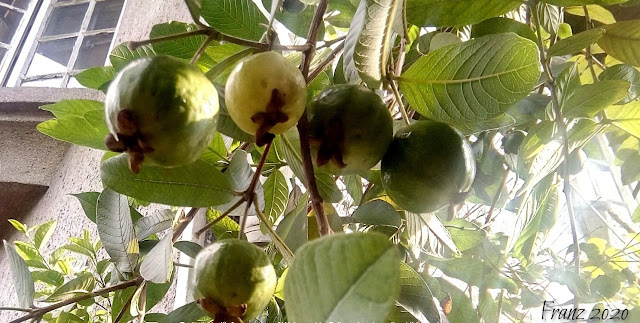The Ripening Season
Last night I was reading a paper about "Pampango" presence in Colima and Jalisco, Mexico, in the 16th-17th Century. Yes, Filipinos that time, had already established a mercantile and trading community on the Pacific coast of Mexico. Lured there by the Galleon Trade.
This morning I was greeted by the site of overripe guavas lying on the lawn and driveway. Nalaglag na. After a week of rain and then again of humidity, our guava tree now yields quite a several ripe fruits. I notice there were also half-eaten guavas that birds pecked on. It also explains these nightly visits we have from strange-sounding creatures -- Bats. I'm happy to know they can still be found in highly urbanized places.
It also occurs to me that guavas or "bayabas" came from the New World. If Filipinos had settled then in Mexico, the Americas had reciprocated by greatly influencing our culinary life and taste buds.
Imagine no sinigang sa bayabas? Or atcharas with no half ripen papayas. Think of your "Tinola" without it. No tubers like patatas and camotes. How about summer driving in Zambales without the usual ambulate singkamas vendors? How will your tuyo taste without the kamatis as added sawsawan? I can go on until we de have proven that the Galleon Trade had indeed influenced our tables -- from breakfast till dinner.
Going back to the bayabas, I like to define its influence on Filipino life with this metaphor -- "Fruit in a ripening season". In a distant past, young boys challenged themselves, proving they were no mere boys anymore. In a rite of passage, they allowed themselves to be wounded, circumcised. To be worthy of being called a full-grown man. And with the remembrance of the taste of that unripe fruit, the 'bubot na bayabas" still fresh in the minds, memories will linger on the first bittersweet taste of manhood.
~Pasig City July 2019

.png)


Comments
Post a Comment